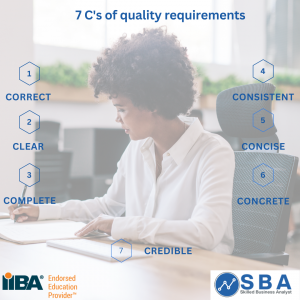
Requirements are a critical component of any project and must be carefully crafted to ensure that they accurately reflect the needs and expectations of the stakeholders. The 7 Cs provide a framework for developing requirements that are correct, clear, complete, consistent, concise, concrete, and credible. By following these principles, project teams can ensure that their requirements are of the highest quality, which in turn increases the likelihood of project success. In this article, we will explore each of the 7 Cs in detail, discussing what they mean and how they can be applied to develop high-quality requirements.
- Correct: The requirement should be accurate and free from errors, ambiguity, and inconsistency. It should reflect the needs and expectations of the stakeholders.
- Clear: The requirement should be stated in clear and concise language that is easily understandable by all stakeholders. It should avoid technical jargon and be accessible to both technical and non-technical audiences.
- Complete: The requirement should capture all the necessary information to fulfill the intended purpose. It should cover all the scenarios and use cases that the system is expected to support.
- Consistent: The requirement should not conflict with other requirements or with the overall objectives of the system. It should be aligned with the business goals and objectives of the organization.
- Concise: The requirement should be brief and to the point, avoiding unnecessary details and complexity. It should be easy to communicate and document.
- Concrete: The requirement should be specific and measurable, so that it can be verified and validated. It should provide a clear definition of what is expected from the system.
- Credible: The requirement should be realistic and feasible, given the available resources and constraints. It should be achievable within the given time and budget.
Yours in Analysis
Tendai
Business Analysis Instructor

